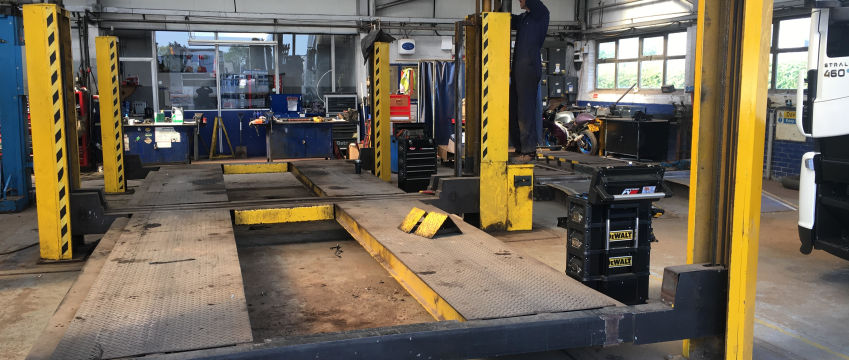INTRODUCTION
Vehicle lifts and lifting equipment can cause severe accidents and injuries if they are used unsafely or if they are inadequately maintained. Working beneath a vehicle is often required to check for faults, servicing and repairs, but because these tasks are so common people get used to working under potentially lethal weights. You should be obliged to always ensure you use the correct equipment for the job, avoid being tempted to take short cuts or use improper equipment to lift heavy items. To decrease the risks of fatal accidents and injuries, guarantee that the users are entirely aware of the safety measures to be followed, not only does this include day-to-day practice but also includes ensuring that the lift has been correctly installed, frequently maintained and thoroughly examined every 6 months.
USING YOUR EQUIPMENT CORRECTLY
- Guarantee there is a safe working procedure for using a vehicle lift and ensure each vehicle lift operator is aware of the method.
- Make sure that all the lifting points for jacks and stands are accurate for that vehicle; consult the vehicle manufactures handbook for guidance.
- Do not exceed the rated capacity (safe working load) of any lifting equipment.
- Ensure that vehicles are always accurately supported – Don’t rely on jacks alone.
- Load and positioning the vehicle – ensure the lift is appropriate for the vehicle and identify the centre of gravity.
MAINTAINING YOUR EQUIPMENT
- Vehicle lifts need to be kept in good order, replace consumable items such as lifting pads, before they become worn and unsafe.
- Vehicle lifts should be thoroughly examined by a competent person, who should issue a ‘Report of Thorough Examination’. It is recommended that this is carried out every 6 months.
- Other lifting equipment such as trolley jacks should be similarly examined every twelve months, having the same report issued by a competent person.
- Lifting accessories such as chains and web slings should be examined every six months.
GEA IMPORTANT SAFETY NOTES
- Lift operators must be properly trained and be made aware of all risk when working with vehicle lifts.
- Always follow the vehicle manufactures recommended lifting points.
- Ensure the load is evenly distributed across all of the lifting points.
- 2 post lifts are equipped with arm-locking devices; it’s essential that these devices are engaged when the vehicle is raised.
- Operators should always check the arm locks are maintained and show no signs of damage or deterioration.
- Lifting pads should be in excellent condition and kept clean from oil and grease.

